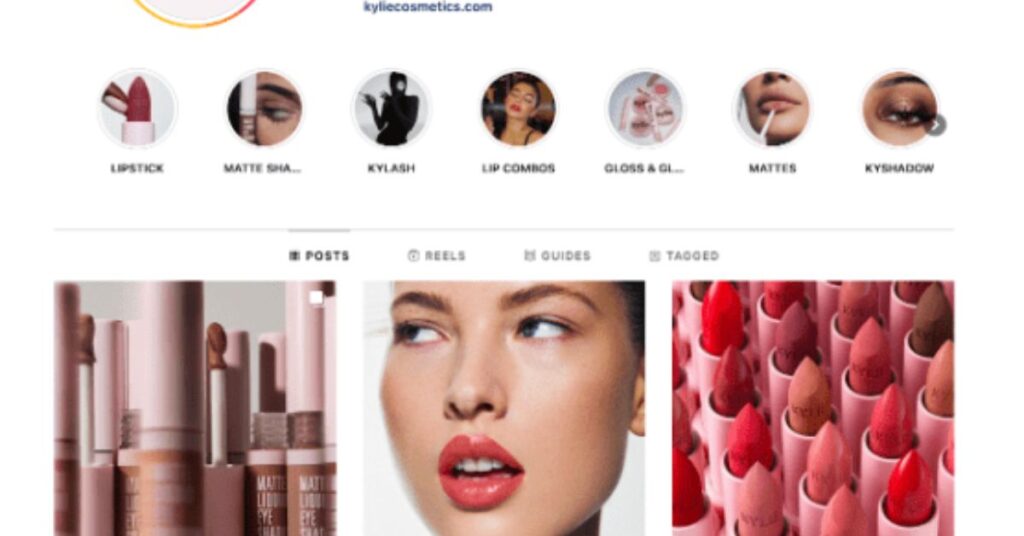In the ever-evolving landscape of digital marketing, influencer marketing has established itself as a powerful strategy for brands to connect with consumers. At the forefront of this trend are social media influencers, particularly those on Instagram, who have turned their online presence into lucrative careers. But how much do Instagram influencers make?
This question has captivated marketers, Instagram influencers, and curious onlookers alike. In this extensive guide, we will delve into the nuances of influencer earnings, offering a comprehensive analysis of how much Instagram influencers earn in 2024, along with comparisons across other platforms, detailed breakdowns by influencer type, and actionable insights for brands and influencers.
Key Takeaways: Understanding Influencer Earnings
Before we dive into the specifics of influencer income, it’s important to understand some key takeaways that set the stage for the rest of the article:
- Wide Range of Earnings: Influencer earnings vary dramatically, with Nano influencers making as little as $50 per post, while top-tier influencers (Mega influencers) can command fees exceeding $1 million per post.
- Niche Significance: Influencers in high-demand niches like fashion, beauty, and technology generally earn more than those in broader or less commercialized niches.
- Engagement Over Follower Count: While the number of followers an influencer has is important, brands increasingly prioritize engagement rates when determining influencer payment, often leading to higher earnings for influencers with more engaged but smaller audiences.
- Diversified Income Streams: Influencers today do not rely solely on sponsored posts; they diversify their income through affiliate marketing, product sales, consultations, and more.
- Geographical Impact: An influencer’s location can significantly affect their earnings, with U.S.-based influencers typically earning more than their counterparts in other regions.
Influencer Earnings Across Platforms

To truly understand influencer earnings, it’s essential to compare how much influencers can make across different social media platforms. Each platform offers unique opportunities and challenges for influencers looking to monetize their content.
Instagram: The Gold Standard for Influencers
Instagram remains the premier platform for influencer marketing. With over 2 billion active users, it offers a visual-centric environment where influencers can build strong personal brands.
- Sponsored Content: Sponsored posts are the most common revenue stream for Instagram influencers. Brands pay influencers to create content that features their products or services. Depending on the influencer’s reach and engagement, rates can range from a few hundred to several thousand dollars per post.
- Instagram Stories and Reels: Short-form content like Stories and Reels has become incredibly popular on Instagram. Brands often collaborate with influencers to create sponsored Stories or Reels, which can be more engaging and less intrusive than traditional posts. Rates for these can be similar to or slightly lower than regular posts, depending on the influencer’s negotiation skills and engagement rates.
- Affiliate Marketing: Instagram also allows influencers to use affiliate links, where they earn a commission on sales generated through their posts. This method is especially popular in the fashion and beauty industries, where influencers can easily recommend products to their followers.
- Instagram Live and IGTV: Longer-form content on IGTV and live sessions also offer monetization opportunities. Instagram introduced badges in 2020, allowing fans to support influencers during live sessions by purchasing badges that appear alongside their comments. Additionally, some influencers monetize IGTV through ads, although this is less common compared to sponsored content.
TikTok: The Rising Star
TikTok has rapidly become a powerhouse in the social media world, especially among younger audiences. Its algorithm-driven content discovery system gives influencers the potential to go viral and gain massive followers in a short period.
- Sponsored Posts and Challenges: Like Instagram, TikTok influencers earn primarily through sponsored content. Brands collaborate with influencers to create engaging videos that promote their products. TikTok’s unique format encourages creative and entertaining content, which can sometimes command higher fees than Instagram, especially when the content goes viral.
- TikTok Creator Fund: TikTok introduced its Creator Fund to provide financial rewards to creators based on the performance of their videos. While the earnings from the Creator Fund are typically lower than sponsored content, it provides a steady income stream for influencers who consistently produce high-performing content.
- Affiliate Marketing: TikTok influencers are increasingly using affiliate marketing, especially in industries like fashion, beauty, and tech. By linking products in their bios or within their content, influencers can earn commissions on sales.
- Brand Partnerships and Merchandise: Some of TikTok’s top influencers have turned their online fame into full-fledged brands, launching merchandise lines or collaborating on product lines with established brands. These deals can be incredibly lucrative, often providing influencers with a significant revenue boost.
YouTube: The Long-Form Content King

YouTube has long been a staple in the influencer marketing ecosystem, particularly for influencers who create in-depth, long-form content.
- Ad Revenue: YouTube’s monetization model primarily revolves around ad revenue. Influencers earn money based on the number of views their videos receive, with additional earnings from ads placed before, during, or after their content. Influencers typically earn $1 to $10 per 1,000 views, depending on their niche and the demographics of their audience.
- Sponsored Videos: Sponsored content is also prevalent on YouTube, with brands paying influencers to create dedicated videos featuring their products. These videos can command high rates, especially if the influencer has a large and engaged subscriber base.
- Affiliate Marketing: Like Instagram and TikTok, YouTube influencers use affiliate marketing to earn commissions on sales generated through links in their video descriptions.
- Merchandise and Memberships: Many YouTube influencers have diversified their income by selling merchandise or offering channel memberships. These revenue streams are particularly effective for influencers with loyal fanbases willing to support them beyond just watching their videos.
Facebook: The Established Giant
While Facebook’s appeal to younger demographics has waned in recent years, it remains a significant platform for influencers, particularly in niche markets.
- Sponsored Posts and Videos: Influencers on Facebook primarily earn through sponsored content, similar to Instagram. However, the rates tend to be lower, given Facebook’s older demographic and the platform’s declining organic reach.
- Facebook Live: Live streaming on Facebook offers monetization opportunities, particularly for influencers in industries like gaming, technology, and personal development. Influencers can earn through fan donations, ad revenue, and sponsored live streams.
- Groups and Communities: Influencers often create or manage Facebook Groups to build communities around their content. These groups can be monetized through exclusive content, memberships, or direct product sales.
How Much Do Instagram Influencers Make?
The most pressing question for many is, “How much do Instagram influencers make?” The answer varies widely based on factors such as follower count, niche, engagement rates, and location. Let’s break down the earnings potential by different types of influencers on Instagram.
Earnings by Follower Count

The number of followers an influencer has is one of the most straightforward indicators of their earning potential. However, it’s important to note that follower count alone does not determine income. Engagement rate, content quality, and niche are equally important factors.
| Influencer Type | Follower Range | Average Earnings Per Post | Income Potential in 2024 |
| Nano Influencers | 1k – 10k | $50 – $200 | $5,000 – $30,000/year |
| Micro-Influencers | 10k – 100k | $200 – $1,000 | $30,000 – $150,000/year |
| Mid-Tier Influencers | 100k – 1M | $1,000 – $10,000 | $150,000 – $1M+/year |
| Mega Influencers | 1M+ | $10,000 – $1M+ | $1M+ – $10M+/year |
- Nano Influencers: These influencers have between 1,000 and 10,000 followers. Despite their smaller audience, they often have highly engaged followers, making them attractive to brands targeting niche markets. Nano influencers typically earn between $50 and $200 per post. While their overall income may be lower than larger influencers, they often secure more consistent work due to their affordability and high engagement rates.
- Micro-Influencers: Micro-influencers have between 10,000 and 100,000 followers. They are increasingly favored by brands because they combine a relatively broad reach with strong engagement. Micro-influencers can earn between $200 and $1,000 per post, with the potential to earn up to $150,000 annually through a combination of sponsored posts, affiliate marketing, and product sales.
Earnings by Follower Counts
- Mid-Tier Influencers: Mid-tier influencers, with follower counts ranging from 100,000 to 1 million, can command higher fees, often earning between $1,000 and $10,000 per post. These influencers are well-established and typically have a loyal following, making them highly valuable to brands looking for impactful marketing campaigns. The income potential for mid-tier influencers in 2024 is significant, with many earning over $1 million per year through a combination of sponsored content, brand partnerships, and other monetization methods.
- Mega Influencers: Mega influencers, with over 1 million followers, are often celebrities or public figures. They command the highest fees, with earnings per post ranging from
$10,000 to over $1 million. Mega influencers are typically involved in high-profile campaigns with major brands and often diversify their income through merchandise, product lines, and even media appearances. In 2024, mega influencers can expect to earn well over $10 million annually if they maximize their monetization opportunities.
Earnings by Niche
An influencer’s niche plays a crucial role in determining their earning potential. Certain niches are more lucrative than others due to higher demand, larger budgets, and more significant consumer interest.
| Niche | Average Earnings Per Post | Examples of High-Earning Influencers |
| Fashion | $1,000 – $20,000 | @chiaraferragni, @songofstyle |
| Beauty | $500 – $25,000 | @hudabeauty, @jamescharles |
| Fitness | $500 – $15,000 | @kayla_itsines, @chrishemsworth |
| Travel | $500 – $10,000 | @muradosmann, @expertvagabond |
| Technology | $500 – $15,000 | @mkbhd, @unboxtherapy |
| Parenting | $200 – $5,000 | @scarymommy, @motherhoodthroughletterboard |
| Food | $200 – $7,000 | @chefsteps, @minimalistbaker |
- Fashion: Fashion remains one of the most lucrative niches for influencers. High-end brands are willing to pay top dollar for influencers who can showcase their products to a large, engaged audience. Influencers like Chiara Ferragni (@chiaraferragni) and Aimee Song (@songofstyle) have turned their Instagram accounts into multimillion-dollar businesses, earning tens of thousands of dollars per post.
- Beauty: The beauty industry has long embraced influencer marketing, with many beauty influencers earning substantial incomes through sponsored posts, brand partnerships, and product lines. Influencers like Huda Kattan (@hudabeauty) and James Charles (@jamescharles) are prime examples of how beauty influencers can earn up to $25,000 per post.
- Fitness: Fitness influencers also command high fees, particularly those who have built strong personal brands around their fitness journeys. Influencers like Kayla Itsines (@kayla_itsines) and Chris Hemsworth (@chrishemsworth) can earn up to $15,000 per post, with additional income from fitness apps, merchandise, and training programs.
Earnings by Niches
- Travel: Travel influencers have a unique earning potential, often securing free trips and accommodations in addition to their fees. Influencers like Murad Osmann (@muradosmann) and Matt Karsten (@expertvagabond) can earn up to $10,000 per post, particularly when promoting luxury destinations or high-end travel products.
- Technology: Tech influencers are increasingly in demand as brands look to promote their latest gadgets and innovations. Influencers like Marques Brownlee (@mkbhd) and Lewis Hilsenteger (@unboxtherapy) can earn up to $15,000 per post, with additional income from YouTube ad revenue, affiliate marketing, and brand collaborations.
- Parenting: Parenting influencers often focus on a highly engaged and loyal audience, making them attractive to brands in the baby and family markets. While their earnings per post may be lower than other niches, influencers like Jill Smokler (@scarymommy) and Ilana Wiles (@motherhoodthroughletterboard) can still command significant fees, particularly for long-term partnerships.
- Food: Food influencers earn by showcasing recipes, food products, and dining experiences. Influencers like ChefSteps (@chefsteps) and Dana Shultz (@minimalistbaker) earn between $200 and $7,000 per post, with additional income from cookbooks, YouTube channels, and branded content.
Earnings by Engagement Rate
While follower count is often the focus when discussing influencer earnings, engagement rate is arguably more important in determining an influencer’s value. Influencers with high engagement rates are seen as more authentic and trustworthy, making them more attractive to brands.
- High Engagement (Above 5%): Influencers with an engagement rate above 5% are considered highly valuable. These influencers can command higher fees, often earning more per post than influencers with larger but less engaged followings. Brands are willing to pay a premium for influencers who can generate meaningful interactions with their audience.
- Moderate Engagement (2-5%): Influencers with engagement rates between 2% and 5% are still attractive to brands, though they may not command the same premium as those with higher engagement. These influencers can expect to earn average rates for their niche and follower count.
- Low Engagement (Below 2%): Influencers with engagement rates below 2% may struggle to command high fees, even if they have a large following. Brands are increasingly wary of influencers with low engagement, as it suggests that their audience may not be as invested in their content. However, these influencers can still earn through sheer volume, particularly if they have a large follower base.
Case Studies: Real-World Examples of Influencer Earnings
To provide a more concrete understanding of how much influencers make, let’s look at some real-world examples of influencers who have turned their social media presence into lucrative careers.

Case Study 1: Chiara Ferragni (@chiaraferragni)
- Follower Count: 29.5 million
- Niche: Fashion
- Estimated Earnings Per Post: $60,000 – $100,000
Chiara Ferragni, an Italian fashion influencer and entrepreneur, is one of the highest-earning influencers on Instagram. With nearly 30 million followers, Ferragni’s posts command fees between $60,000 and $100,000, depending on the brand and campaign. In addition to her sponsored posts, Ferragni has built a multimillion-dollar business with her fashion line, The Blonde Salad, and has collaborated with major brands like Louis Vuitton, Dior, and Chanel.
Case Study 2: Kayla Itsines (@kayla_itsines)
- Follower Count: 15.8 million
- Niche: Fitness
- Estimated Earnings Per Post: $15,000 – $25,000
Kayla Itsines, an Australian fitness influencer, has built a massive following through her fitness programs and apps. Itsines earns between $15,000 and $25,000 per post, with additional income from her fitness app, Sweat, which reportedly generates over $100 million annually. Her success is a testament to the earning potential of influencers who combine their social media presence with a solid business model.
Case Study 3: Huda Kattan (@hudabeauty)
- Follower Count: 53 million
- Niche: Beauty
- Estimated Earnings Per Post: $25,000 – $50,000

Huda Kattan, a beauty influencer and entrepreneur, has turned her Instagram presence into a billion-dollar empire. With over 53 million followers, Kattan earns between $25,000 and $50,000 per post. Her beauty brand, Huda Beauty, is one of the most successful influencer-founded businesses, with products sold in major retailers worldwide. Kattan’s success highlights the potential for influencers to leverage their social media following into multimillion-dollar businesses.
How Influencers Make Money: Diverse Income Streams
While sponsored posts are the most common revenue stream for influencers, they are by no means the only way influencers make money. In 2024, influencers are increasingly diversifying their income streams to create more stable and sustainable businesses.
Sponsored Posts and Brand Partnerships

Sponsored posts are the bread and butter of influencer income. Brands pay influencers to create content featuring their products or services, typically to increase brand awareness, driving sales, or both. The amount influencers can charge for sponsored posts varies based on their follower count, engagement rate, niche, and the scope of the campaign.
- One-Off Sponsored Posts: These are single posts where the influencer promotes a brand’s product or service. Rates for one-off posts vary widely, from as little as $50 for Nano influencers to over $1 million for Mega influencers. Brands may choose one-off posts for specific product launches or short-term campaigns.
- Long-Term Brand Partnerships: Many influencers prefer long-term partnerships, where they collaborate with a brand over several months or even years. These partnerships often include multiple posts, Stories, Reels, and sometimes exclusive content. Long-term partnerships are mutually beneficial, as they allow brands to build a consistent presence in the influencer’s content, while influencers enjoy a steady income stream.
Affiliate Marketing
Affiliate marketing is another popular income stream for influencers. In this model, influencers earn a commission on sales generated through their unique affiliate links. Affiliate marketing is particularly prevalent in the fashion, beauty, and tech industries, where influencers can easily recommend products to their followers.
- Fashion Influencers: Fashion influencers often use affiliate marketing to promote clothing, accessories, and beauty products. By linking to online retailers in their posts, influencers earn a percentage of the sales generated through their links. Some fashion influencers earn six-figure incomes through affiliate marketing alone.
- Tech Influencers: Tech influencers use affiliate marketing to promote gadgets, software, and other tech products. Affiliate programs from major retailers like Amazon and Best Buy are particularly popular among tech influencers, allowing them to earn commissions on a wide range of products.
Merch and Products

Many influencers have capitalized on their brands by launching
their products, ranging from merchandise like clothing and accessories to more niche products like fitness programs and beauty lines. These products offer influencers a more stable and scalable income stream than sponsored posts alone.
- Merchandise: Influencers with large, dedicated fanbases often launch merchandise lines featuring their logos, catchphrases, or personal designs. These lines can include clothing, accessories, phone cases, and more. Merchandise sales can be incredibly lucrative, particularly for influencers in the fashion, lifestyle, and entertainment niches.
- Courses and Digital Products: Many influencers in niches like fitness, personal development, and entrepreneurship. Create and sell digital products, such as online courses, eBooks, and training programs. These products allow influencers to monetize their expertise and offer value to their followers beyond social media content.
- Branded Products: Some influencers go a step further and launch their own branded products. Such as beauty lines, fitness equipment, or even food products. These ventures can be incredibly profitable, particularly for influencers. Who have built strong personal brands and have a deep understanding of their audience’s preferences.
Consulting and Coaching
As influencers have become experts in building personal brands and creating engaging content. Many have transitioned into consulting and coaching roles. Influencers offer their services to aspiring influencers, brands, and even traditional media outlets looking to navigate the world of social media marketing.
- Consulting Services: Influencers offer consulting services to brands looking to improve their social media presence, develop influencer marketing strategies, or create engaging content. These services can be particularly valuable for small businesses or startups that may not have the budget for large-scale marketing campaigns.
- Coaching Programs: Some influencers offer one-on-one or group coaching programs to help aspiring influencers build their personal brands, grow their followings, and monetize their content. These programs can be a significant income source, particularly for influencers with a strong track record of success.
Speaking Engagements and Appearances
Influencers are increasingly sought after for speaking engagements, panel discussions, and media appearances. These opportunities allow influencers to share their expertise, build their personal brands, and earn additional income.
- Speaking Engagements: Influencers are often invited to speak at conferences, industry events, and corporate seminars. These engagements can be particularly lucrative, with top influencers earning tens of thousands of dollars for a single appearance.
- Media Appearances: Influencers may also be featured in television shows, podcasts, and online interviews. Where they can share their insights on social media trends, influencer marketing, and personal branding. These appearances can help influencers reach new audiences and further establish their authority in their niche.
The Future of Influencer Earnings in 2024 and Beyond
As we look ahead to 2024 and beyond, influencer marketing shows no signs of slowing down. In fact, the industry is expected to continue growing, with new opportunities emerging for influencers to monetize their content and build successful businesses.
Emerging Platforms and Technologies
While Instagram and TikTok remain dominant, new social media platforms and technologies are constantly emerging, offering fresh opportunities for influencers to reach audiences and earn money.
- New Social Media Platforms: Platforms like Clubhouse, Threads, and BeReal have gained popularity in recent years. Attracting influencers looking to diversify their presence. While these platforms may not offer the same monetization opportunities as Instagram or TikTok. They allow influencers to connect with audiences in new and unique ways.
- Augmented Reality (AR) and Virtual Reality (VR): AR and VR technologies are becoming increasingly integrated into social media platforms. Offering new opportunities for influencers to create immersive content. Influencers who embrace these technologies early on may find themselves at the forefront of a new wave of influencer marketing.
The Rise of Micro and Nano Influencers
While Mega influencers will continue to command high fees, the industry is increasingly shifting towards Micro and Nano influencers. Brands recognize the value of working with influencers. Who have smaller but highly engaged audiences, as they often offer better ROI.
- Increased Demand for Authenticity: As consumers become more savvy and discerning, authenticity will become increasingly important in influencer marketing. Micro and Nano influencers, who often have closer relationships with their followers, will be in high demand for brands looking to create genuine connections with consumers.
- More Opportunities for Smaller Influencers: With the rise of Micro and Nano influencers. There will be more opportunities for smaller influencers to earn money and build successful careers. These influencers may not earn the same amounts as Mega influencers. But they will benefit from more consistent work and stronger brand partnerships.
The Impact of Regulation and Transparency
As the influencer marketing industry matures, it is likely to face increased regulation and scrutiny. Governments and regulatory bodies around the world are already taking steps to ensure transparency and fairness in influencer marketing, which could impact how influencers earn money.
- Disclosure Requirements: Influencers are increasingly required to disclose sponsored content and affiliate marketing partnerships to ensure transparency with their audiences. While these requirements are important for maintaining trust. They may also impact influencer earnings if brands are less willing to invest in sponsored content.
- Regulation of Influencer Income: Some countries may introduce regulations aimed at ensuring fair compensation for influencers. Particularly in cases where influencers work with agencies or platforms that take a percentage of their earnings. These regulations could help protect influencers and ensure they receive fair compensation for their work.
Influencer Marketing Tips for Brands in 2024
As influencer marketing continues to evolve, brands must stay ahead of the curve to maximize their ROI. Here are some tips for brands looking to succeed in the influencer marketing space in 2024:
Focus on Engagement, Not Just Follower Count
When selecting influencers to work with, brands should prioritize engagement rates over follower counts. Influencers with highly engaged audiences are more likely to drive meaningful results, even if their followings are smaller.
- Analyze Engagement Metrics: Look beyond the number of likes and comments on an influencer’s posts. Analyze how followers interact with the content, including shares, saves, and direct messages. These metrics provide a more comprehensive view of the influencer’s engagement and impact.
- Look for Audience Alignment: Ensure that the influencer’s audience aligns with your target demographic. An influencer with a smaller, highly targeted following may be more effective than a larger influencer whose audience is less relevant to your brand.
Invest in Long-Term Partnerships
Long-term partnerships with influencers can provide more consistent results and help build stronger brand loyalty.
- Build Relationships: Take the time to build relationships with influencers, understanding their values, goals, and content styles. Long-term partnerships are more likely to succeed when both parties are aligned and invested in the collaboration.
- Create Integrated Campaigns: Work with influencers to create integrated campaigns that include multiple posts, Stories, Reels, and exclusive content. These campaigns are more effective at driving awareness, engagement, and conversions than one-off posts.
Leverage User-Generated Content
User-generated content (UGC) is a powerful tool in influencer marketing. Encourage influencers to create content that can be repurposed across your brand’s social media channels, website, and marketing materials.
- Encourage Authenticity: Allow influencers creative freedom to produce content that resonates with their audience. Authentic UGC is more likely to engage consumers and build trust in your brand.
- Repurpose Content: Repurpose UGC across multiple platforms and marketing channels to maximize its impact. For example, you can use influencer content in email campaigns, social media ads, and website testimonials.
Stay Agile and Adapt to Changes
The social media landscape is constantly changing, and brands must be agile to stay ahead of trends and challenges. How Much Do Instagram Influencers
- Monitor Industry Trends: Stay informed about the latest trends in social media and influencer marketing. Platforms, algorithms, and consumer preferences are constantly evolving, and brands that adapt quickly will be better positioned for success.
- Experiment with New Platforms: Feel free to experiment with new social media platforms and technologies. While only some platforms will be a fit for your brand, early adoption can give you a competitive edge and help you reach new audiences.
Conclusion: The Future is Bright for Influencer Marketing
In 2024, influencer marketing is expected to continue its rapid growth. With influencers playing an increasingly important role in digital marketing strategies. From Instagram and TikTok to emerging platforms and technologies. But Influencers have more opportunities than ever to build successful careers and earn substantial incomes.
As brands continue to recognize the value of influencer marketing. They will need to stay ahead of trends, prioritize engagement and authenticity, and invest in long-term partnerships to maximize their ROI. For influencers, the key to success will be diversifying income streams, building strong personal brands, and staying adaptable in the ever-changing social media landscape.
Ultimately, the future is bright for influencer marketing, with endless possibilities for brands and influencers to connect with consumers and drive meaningful results.

Mehar Sajid is the dedicated admin of 88club.tech, ensuring the smooth operation and development of the site. With a keen eye for detail and a passion for technology, Mehar efficiently manages the website’s functionality, user experience, and content updates. Their expertise in tech maintenance and problem-solving keeps 88club.tech running seamlessly, providing users with a reliable platform for all their needs.








